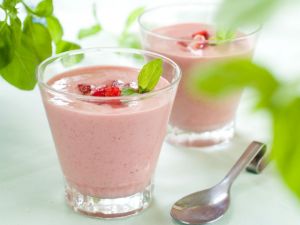
Yogurt fans, you may just have one more reason to stock up on those cute cups. A recent study, published in the Journal of the European Association for the Study of Diabetes, found that consuming low-fat fermented dairy products cut the risk of developing type II diabetes by up to 28 percent.
Earlier inconclusive evidence linking dairy products with type II diabetes onset prompted scientists at the University of Cambridge to reassess former studies. They reevaluated the earlier EPIC-Norfolk study, which included over 25,000 participants. The original food diaries were examined, and eleven years after the original study, 3,502 participants were randomly selected for a follow-up.
Over the course of 11 years, those who consumed the most low-fat fermented dairy, including yogurts, kiefer and some cheeses, were 24 percent less likely to develop type II diabetes. However, yogurt reigned supreme in this study, as results found that those who consumed the most yogurt experienced a 28 percent reduced risk.
Scientists are not quite sure of the mechanism for this result, yet note that one cause may be that participants replaced processed carbohydrate-rich snacks with the dairy products. Also, they believe the fermentation process could be key, as beneficial bacteria along with a unique form of vitamin K may play a role in warding off the disease.
Researchers note that this study provides evidence that certain foods may be beneficial for preventing diabetes, whereas up to this point much of the research has only singled out which foods to avoid.
“This research highlights that specific foods may have an important role in the prevention of type 2 diabetes and are relevant for public health messages,” said lead scientist Dr. Nita Forouhi of the Medical Research Council (MRC), Epidemiology Unit, at the University of Cambridge.
While this latest research is great news for yogurt fans, it’s important to consider that not all yogurt is created equal. Follow these guidelines when perusing the dairy case:
- Always choose organic yogurts, as the cows providing the milk have not been administered dangerous medications or fed GMO-based feeds.
- Beware of added sugars found in the flavored varieties.
- “Fruit on the bottom” is a far cry from real fruit. Instead, add your own organic favorites to plain yogurt.
- Skip the add-ins like granola, sprinkles and other candies, as these spike the sugar-load.
- Look for the “Live and Active Cultures” seal from the National Yogurt Association. If the product doesn’t carry this label, it cannot be called “yogurt,” as it doesn’t contain the necessary beneficial bacteria.
- Fat-free doesn’t mean calorie free. Many low or nonfat varieties contain added sugar or even worse, dangerous artificial sweeteners, so read your ingredient list carefully.
 While all store-bought yogurt undergoes some processing, you can avoid it altogether by making your own at home. Follow these steps for a basic do-it-yourself yogurt recipe:
While all store-bought yogurt undergoes some processing, you can avoid it altogether by making your own at home. Follow these steps for a basic do-it-yourself yogurt recipe:
- In a large saucepan, heat one quart milk until it reaches 180 degrees on a thermometer. Remove from heat, keeping the thermometer in the pot.
- When the temperature drops to 115 degrees, stir in a quarter cup of plain yogurt. Pour the mixture into a sterilized jar and screw on the lid.
- Allow the yogurt to sit in a warm place for 10-12 hours, or longer for a thicker or tangier yogurt.
- Refrigerate for at least three hours and enjoy.
-The Alternative Daily
Sources:
http://www.sciencedaily.com/releases/2014/02/140205184736.htm
http://www.diabetologia-journal.org
http://www.thedoctorwillseeyounow.com/content/diabetes/art4269.html
http://www.npr.org/2013/11/06/243014945/yes-it-s-worth-it-to-make-your-own-yogurt

